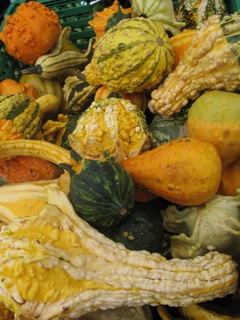 I love celebrations that serve to remind us about important aspects of our lives. Mother’s Day and Father’s Day celebrate two of the most important people in our lives while Earth Day reminds us to take care of the planet we depend on for our survival. But seasonal celebrations are too often overlooked in our modern, fast-paced urban world. With the days getting shorter, the kids back in school and most everyone back to work; autumn is a time when we start spending more and more of our lives indoors. We flick on electric lights, fire up the furnace, turn on the TV and often forget about our biological roots and our connections to nature and the seasons…
I love celebrations that serve to remind us about important aspects of our lives. Mother’s Day and Father’s Day celebrate two of the most important people in our lives while Earth Day reminds us to take care of the planet we depend on for our survival. But seasonal celebrations are too often overlooked in our modern, fast-paced urban world. With the days getting shorter, the kids back in school and most everyone back to work; autumn is a time when we start spending more and more of our lives indoors. We flick on electric lights, fire up the furnace, turn on the TV and often forget about our biological roots and our connections to nature and the seasons…
I remember visiting a First Nations Reserve while I was on a tour for Wisdom of the Elders, my book about the conjunction of ancient traditional knowledge and ideas from modern science. Ushered into a longhouse where there were only a handful of people, I was welcomed with an apology. Apparently, the poor attendance was due to a community celebration of the sap flowing through the trees. In fact, they have a couple of dozen days a year when the community acknowledges such important seasonal events as the first snowfall, the last ice, the first buds, and so on. I was so impressed with their recognition of the seasonality of events and the kinds of things that mattered to them.
After a few years of this annual ritual, we realized that many of our friends in First Nations communities up the coast of British Columbia don’t often get fresh fruit, so we began sending boxes of cherries to them. Last year we picked more than 700 pounds and sent dozens of boxes! The bonus to this ritual is that each year, our friends reciprocate with halibut, herring eggs, salmon, crabs, and much more. And most importantly, our children understand and revel in the seasons and food.
To me, this kind of celebration of nature’s bounty and the sharing of it with friends and family is what Thanksgiving is all about. It’s one of those few formal events that provide a ritual celebration of our biological nature – in particular our need to take animals and plants for food. And it allows us to enjoy the company of those we love while reflecting on the things that matter.
Like that First Nations community, I think we ought to have more times when we acknowledge the seasons and the changing world. I’ve seen different communities that celebrate peaches, blueberries, strawberries and many other fruits and vegetables. Years ago, Sweden decided to celebrate one of its most important resources – water. For a week, communities have events around water and they cap it with a prestigious Water Prize which a Canadian, David Schindler, won the first year.
Given how much we depend on the cycles of nature for our survival, it seems odd that we choose to suppress rather than to celebrate them. We should indeed be celebrating the wind, the forests, our fish, our soil, the sun, and so many more things that matter so much in our lives. And at this time of the year, Thanksgiving provides a welcome moment to reflect on Earth’s productivity, abundance and generosity. Happy Thanksgiving.
Take the Nature Challenge and learn more at www.davidsuzuki.org.




















